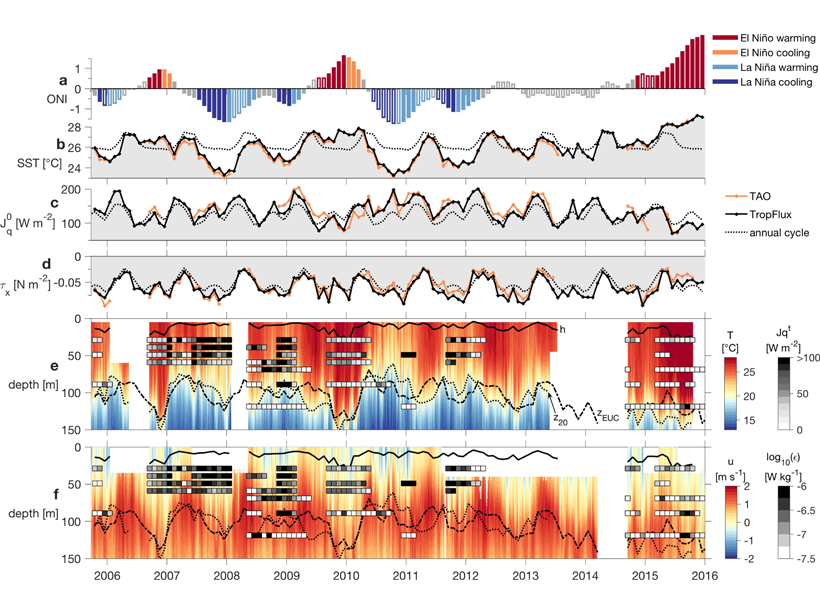Source: Geophysical Research Letters
Typically, the oceanic circulation in the equatorial Pacific Ocean relies on a coupling of the easterly trade winds and the equatorial zonal sea surface temperature (SST) gradient with a corresponding thermocline tilt that are, respectively, warmer and deeper in the west. This positive feedback acts to strengthen the easterly trades bringing stability to the system. However, changes of any part of this dynamical system—the winds, the SST, the thermocline slope—can destabilize the system and spawn the generation and demise of El Niño Southern Oscillation (ENSO) events.
Using an 11-year time series of mixing measurements from χpods in the eastern tropical Pacific Ocean, Warner and Moum [2019] show that turbulent mixing of water from below the surface may significantly contribute to changes in the SST during the transitions to peak ENSO phases. More specifically, mixing is elevated and cools the SST through subsurface mixing of colder water during the transition from the “typical” phase to the peak La Niña. The mixing is reduced during the transition from the neutral state to the peak El Niño when the SST warms. Although the number of ENSO events captured in the time series are still relatively few, these results suggest that enhanced turbulent mixing may play a pivotal role in disrupting the coupled air-sea system that leads to the development of peak ENSO events.
Citation: Warner, S.J., & Moum, J. N. [2019]. Feedback of mixing to ENSO phase change. Geophysical Research Letters, 46, 13920– 13927. https://doi.org/10.1029/2019GL085415
—Janet Sprintall, Editor, Geophysical Research Letters
Text © 2020. The authors. CC BY-NC-ND 3.0
Except where otherwise noted, images are subject to copyright. Any reuse without express permission from the copyright owner is prohibited.

